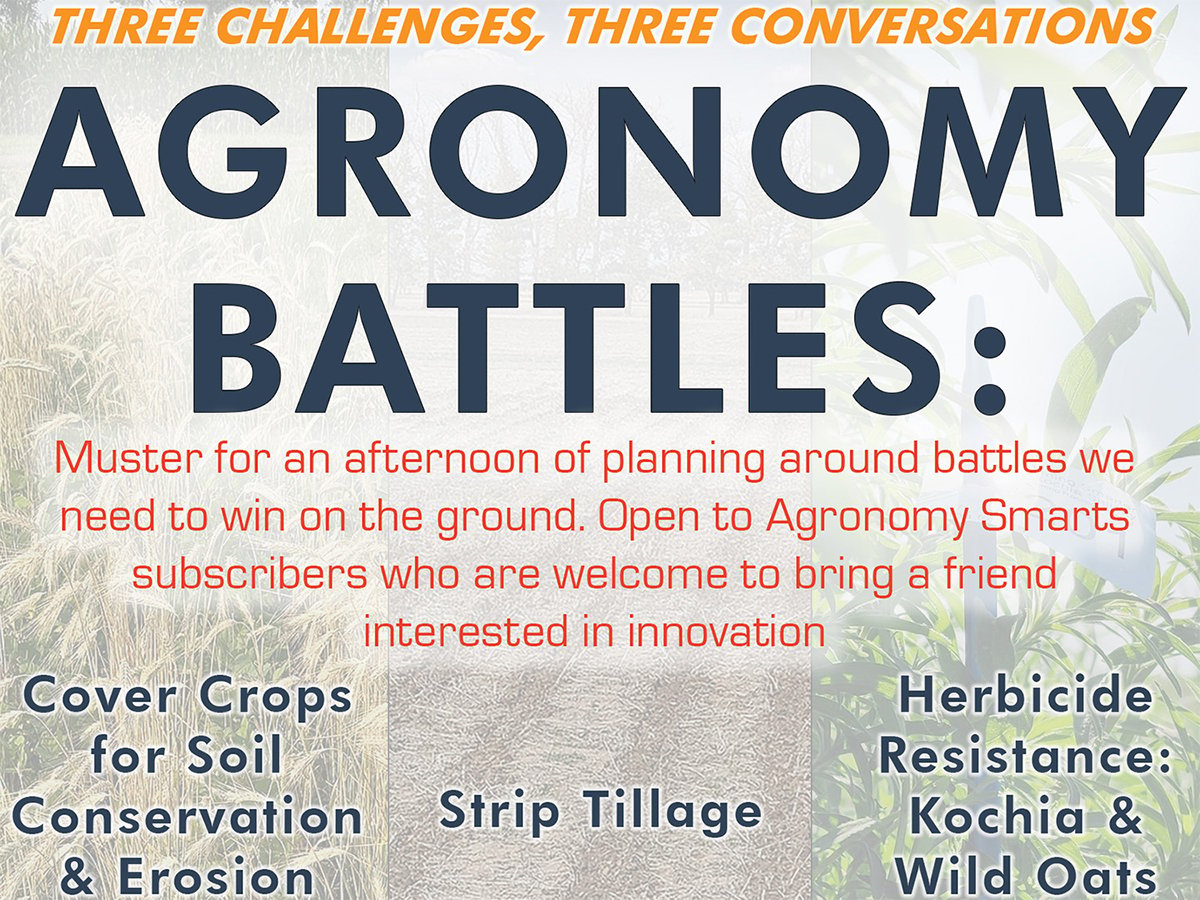Increasing moisture in oilseeds and cereals adds weight to grain — and the wallet
Brendon Kaminsky’s aeration fans may have been turning on and off in southern Manitoba two years ago as they re-hydrated soybeans, but the system was being managed on a laptop in Lethbridge.
Kaminsky’s Integris system was built and managed by Calvin Boisjoli, a specialist with Wall Grain Management Solutions.
The sensors were located in Kaminsky’s bins, transmitted readings to a computer at the Wall Grain shop in Brunkild, Man., and monitored and fine tuned by Boisjoli at his office in Lethbridge, via internet remote control.
Read Also

Farming Smarter to hold Agronomy Battles series
Southern Alberta non-profit research institute hope grassroots sessions with producers help focus future research on cover crops, strip tillage and herbicide resistance
Dave Wall, owner of Wall Grain, said most people think of aeration systems only in terms of drying and cooling grain, but the Integris software makes an aeration system capable of doing a lot more.
“We have a number of customers across the three provinces who use the system to re-hydrate canola, wheat, barley, corn, peas and soybeans,” he said.
“Re-hydrating grain pays handsomely. Kaminsky was a good example.”
Wall estimated that Kaminsky’s two bins were each half full, for a total of 30,000 bushels of soybeans. Increasing the moisture by 2.5 percent is the same as a gain of 750 bu.
The price that summer was about $15 per bu., which pencils out to a gain of $11,000.
“A good aeration system makes money for the grower every year,” Wall said.
“The best solution to any harvest problem is to get it wrapped up as early as possible, even if that means putting an extra couple points of moisture in the bin.
“It’s easier to use your aeration to extract moisture than to add moisture, but it works both ways. The main economic justification for expanding on-farm storage and aeration is the opportunity to minimize risk.”
Boisjoli said it’s usually no problem re-hydrating grain in southern Alberta in fall and even in winter some years.
However, the process takes longer in cold weather because the air has less water-holding capacity.
The Integris software was developed by OPI Systems in Calgary and sold to Wall Grain.
Boisjoli was one of the key members of the development team for seven years and he knows the system inside and out.
Because Wall now owned the Integris software, it only made sense to hire Boisjoli.
“I travelled extensively all over the world for OPI, so I have a pretty good handle on who is doing what with regard to this type of hardware and management,” said Boisjoli.
For more information, contact Boisjoli at 403-991-0103 and Wall at 204-269-7616 or visit www.wallgrain.com.















